Microsoft's Windows Phone Summit in San Francisco - We're There
by Brian Klug on June 20, 2012 10:56 AM EST- Posted in
- Smartphones
- Microsoft
- windows phone 7
- Mobile
- windows phone
We're inside the venue at Microsoft's Windows Phone developer summit in San Francisco. From the look of the posters we're in for some new features, including some facial recognition goodness. Vivek did an awesome job covering the Windows Surface announcement in LA just two days ago, now we are just a short wait away from seeing what Microsoft has in store for the phone side of things.
We've just taken our seats inside the venue, there are a few tablets on display along with the familiar Windows Phone interface on display. Things should be getting started shortly here.
The event is underway and we're seeing the usual assortment of positive praise quotes for the platform from press and reviewers. Some stats have flashed by, over 90,000 Windows Phone 7 applications on the market.
Windows 8 is the subject now, and Microsoft is ready to preview Windows Phone 8. On the Amazon wireless store, 7 of the top 9 reviewed phones are Windows Phone 7 devices. Microsoft feels that its platform is still a breath of fresh air compared to other devices and platforms.
Today is Microsoft's Windows Phone 8 platform preview. Joe Belfiore is now talking about how Windows Phone 7 is based on Windows CE and how the platform could benefit from an upgrade at the core. Common code will now be shared between Windows 8 and Windows Phone 8. That means a shared kernel between Windows Phone 8 and Windows 8.
This is a huge amount for developers in terms of being able to have a smooth transition for applications between Windows 8 and Windows Phone 8 - hopefully this means shared application spaces between the two. This also enables the hardware developers and SoC vendors to develop their drivers once and share that between desktop Windows 8 (Windows RT) and Windows Phone 8.
Dual core is now supported thanks to the shared kernel. Joe says that the work being done on the Windows kernel focuses on dual core, probably the scheduler for really using those multiple cores in an efficient manner. Higher screen resolutions are also supported now, including both WXGA (1280x768) and 720p in addition to the traditional WVGA (800x480). All of the existing WP7.5 applications should run fine on the new higher resolutions. Removable microSD support is also a new addition, this is something I know many shoppers wanted when WP7 initially launched, and although you could do it with some of those early devices, because WP7 setup a JBOD it was never upgradeable without a complete format. Now users can expand storage after the time of purchase easily.
As rumored, IE 10 is now integrated into WP8, with a 4x faster JavaScript engine and 2x the HTML5 support. I look forward to checking both of those out to see what exactly has changed. Joe just showed off SunSpider numbers, looks like around 1250 ms for WP8 on what I would assume is a dual core platform.
Next up is support for native code on a common platform between WP8 and Windows 8, with access to DirectX (Direct 3D?) APIs. This should enable much better gaming experiences than the XNA games we saw before on WP7.
NFC also gets support in Windows Phone 8, there's a demo coming with some of what that means for sharing from the OS. Along those lines is a wallet experience, which seems to be the big thing every platform is adding this next cycle, for tap to pay and loyalty cards. Devices with the SE embedded in the SIM can be used to make those tap to pay tokens work.
Nokia maps are also getting added into WP8, including Nokia's Navteq mapping data, all of the offline support, and full turn by turn directions. Nokia's mapping experience on the Lumia series is excellent and has steadily improved, and this will be excellent for the rest of the WP8 platform.
Secure boot enabled by the shared windows kernel is the next feature, including encryption and better managment for system administrators and enterprises. No doubt the same management tools that work with Windows 8 will work with WP8.
Start screen is the next topic - Microsoft is changing the start screen. Tiles can now be resized and customized in new ways. It looks like there are a number of new shapes instead of the previous 1 wide and 2 wide sizes that were in WP7.
The new live tiles are getting shown off on a prototype Nokia dual core development device with a high resolution display. Applications tiles on the home screen being shown off are normal WP7.5 apps, which looks promising.
IE10 features including unsafe website reporting is now on Windows Phone 8 as well. HTML5 and JavaScript performance is next up, with the IE demo "fountain of apps" running at around 30 fps via hardware acceleration of the HTML5 canvas. This gets shared from the desktop IE10.
The DirectX MarbleMaze game SDK sample which comes from Windows 8 also is being shown off running on Windows Phone 8 with what Joe says are very minor code changes.
Tapping a Windows Phone 8 to an NFC tag containing contact data results in a toast, and easy import into the address book. Likewise using the sharing menu and NFC, two phones can be tapped together and exchange content.
Some of the wallet features are being shown off, including the wallet UI. Third party applications can expose info through WP8 which shows up in the WP8 wallet automatically.
There's now talk about just what gets shared, and an explicit mention about the Windows Kernel being that shared component between WP8 and Windows 8. That includes the windows drivers, which should help SoC partners dedicate more time to optimizing just one driver and pusing that out to the entire WP8 ecosystem. For networking, IPv6 and better bluetooth comes along. Direct3D and better media playback and record also come over. Native code support and more .NET engine (same as the Windows desktop) also come over.
Microsoft is really stressing the gaming experiences that will get enabled using native code (C++) and Direct3D on Windows Phone 8. Havok will bring its full engine to WP8 and enable better physics capabilities for game developers. The havok demos shown off looked pretty performant and included the same kind of destruction physics I think we're all used to seeing on the desktop.
We're seeing a lot more detail now on the features and APIs which are being added in WP8, including SQLite (finally!), improved multitasking support for VoIP applications, and what APIs get shared between the form factors.
Microsoft just emphasized that it has had the ability to launch applications using Speech since day one, making a subtle dig at Siri. Voice prompts in application contexts are now exposed as well for developers. The demos just shown off included conversational contexts inside applications instead of with a first party function outside of the app.
Finally some talk about compatibility. Applications from WP7 will run on WP8, and every WP7 and WP8 application will be compiled in the cloud for developers automatically.
Three real program approaches are now supported in WP8 - XAML with C#/VB, native C/C++, or HTML5/JS webapps, there's some cross compatibility thankfully so developers can use multiple things if necessary. For building applications across Windows 8 and Windows Phone 8, Microsoft has a few guidelines. Apps using the first one (XAML with C#/VB), games on a native codebase (C++/C), and simple mobile web apps should target the last one, HTML5/JS. I should note that the HTML5/JS applications are not the same kind of Windows JavaScript applications that we were shown on the desktop Windows 8.
For businesses, WP8 adds an enterprise business hub, which can be customized with applications recommended for that particular business, alerts, profile, and other highlights.
Windows Phone 8 hardware is up next, and launch WP8 phones will come from Nokia, Huawei, Samsung, and HTC. Most notable is that all of these launch devices will be powered by Qualcomm SoCs, so it appears that Qualcomm is still exclusive for now.
Updates now can take place over the air (OTA) and are supported for 18 months at minimum. I'm excited about the next point, which is an expedited update rollout program for registered customers and enthusiasts, this is awesome since waiting for that OTA push is excruciating at times.
Microsoft finally announced that existing WP7 devices will not get updated to WP8, instead they'll get WP7.8 and a partial update feature set, including the new home screen with customizable live tiles. Microsoft considers the new home screen the "marquee" new consumer feature in WP8,
Updates are coming to the Lumia series next week, and to the rest of the world over the coming weeks. A DLNA application, Nokia Counters (data monitoring application), camera enhancements and extras, and a few others.
The Windows Phone Marketplace is now up to 100,000 applications, and all those will run on WP8. That looks like a wrap, we'll see what else there is in store for us today shortly.


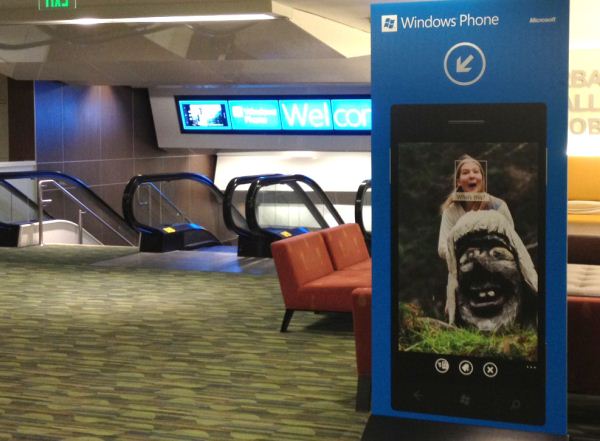
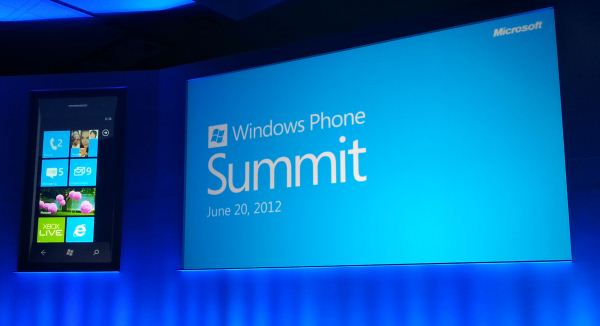
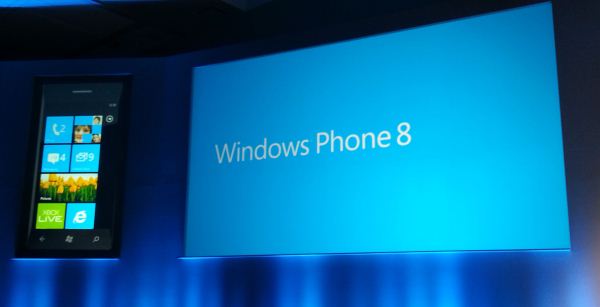

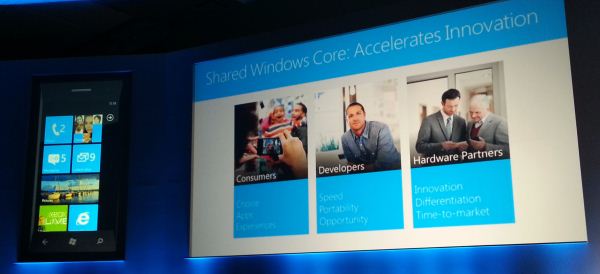
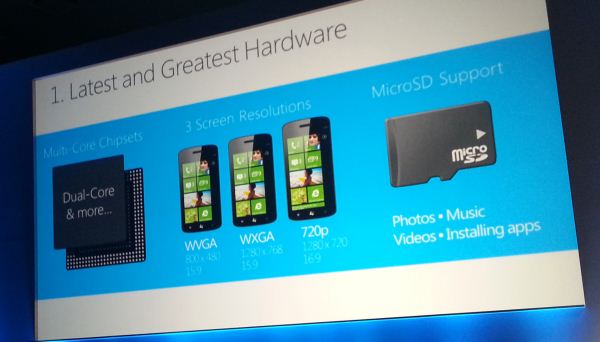
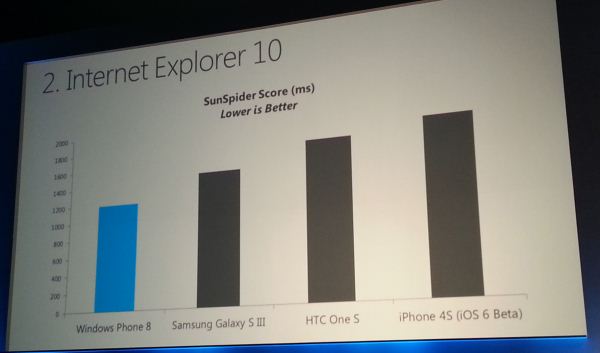
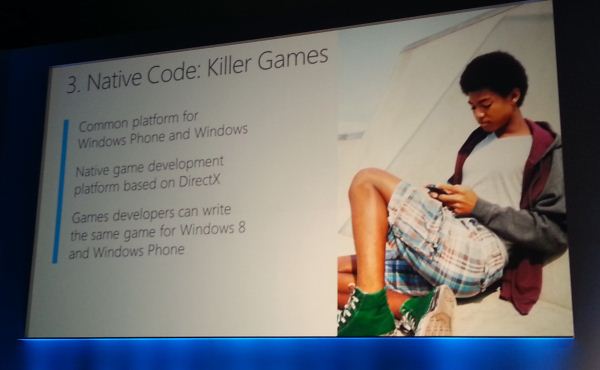
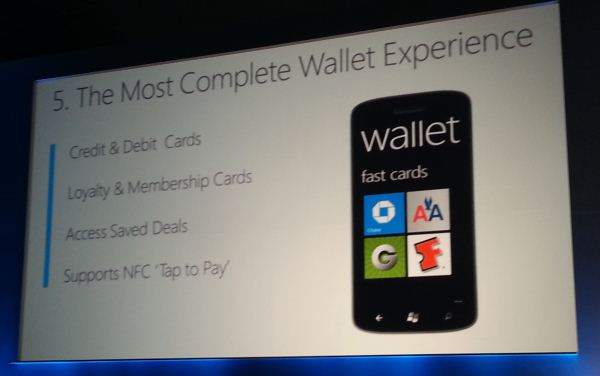
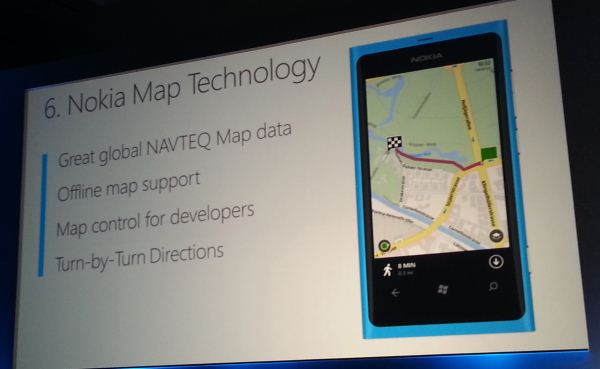
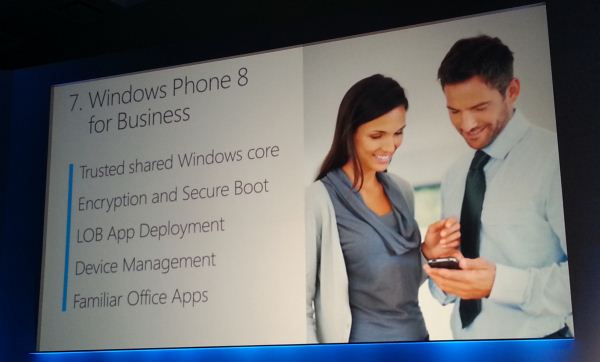

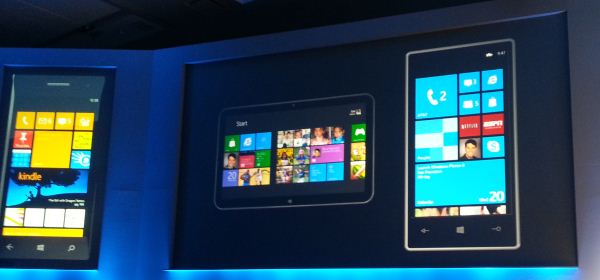
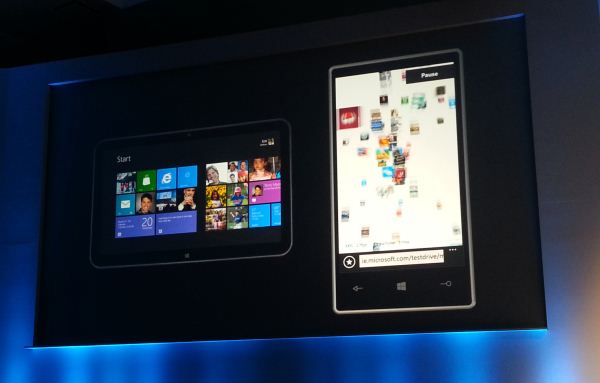
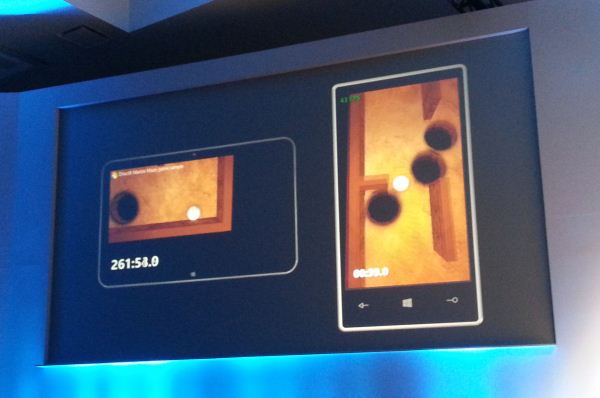
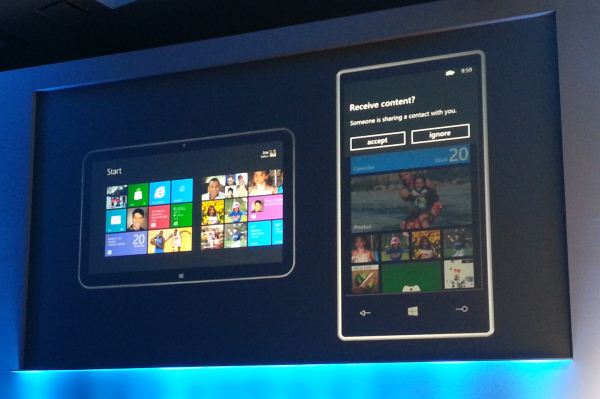
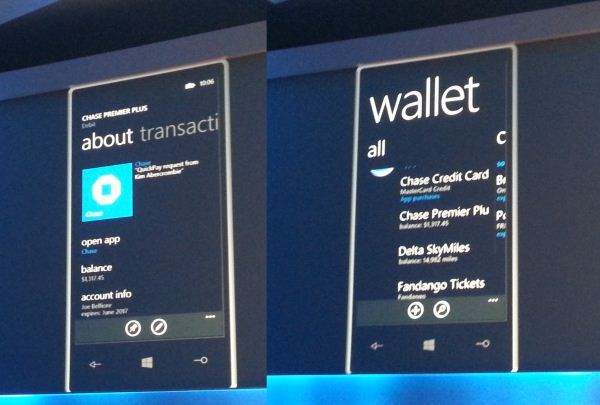

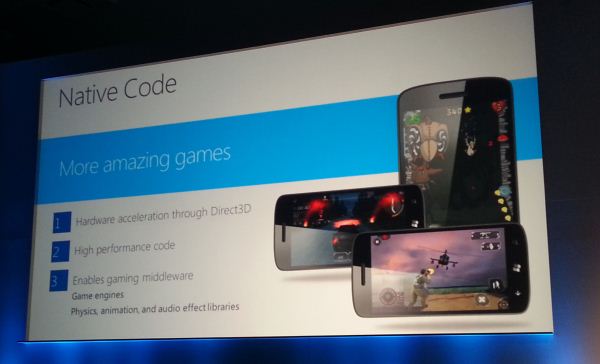
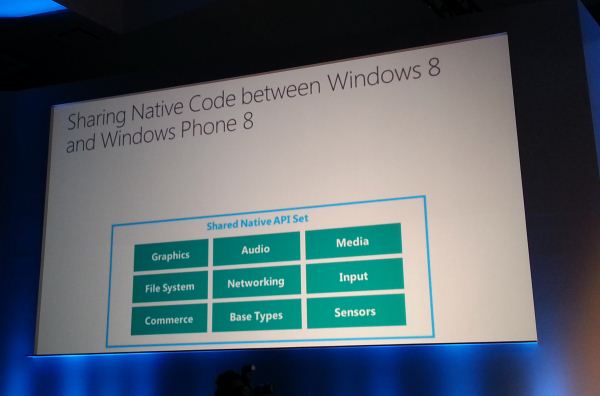
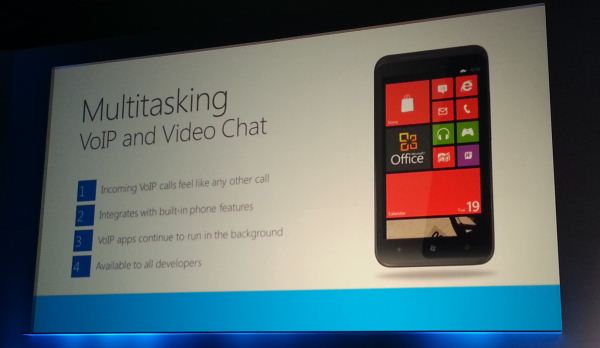
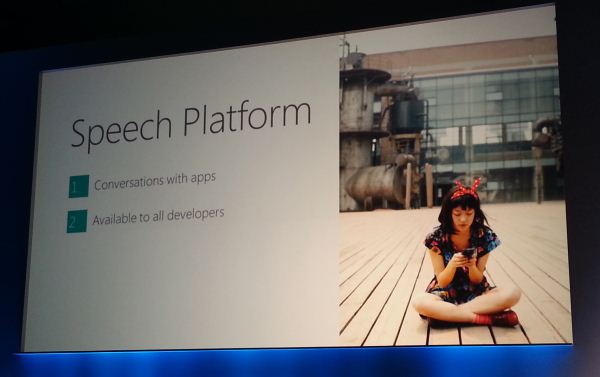
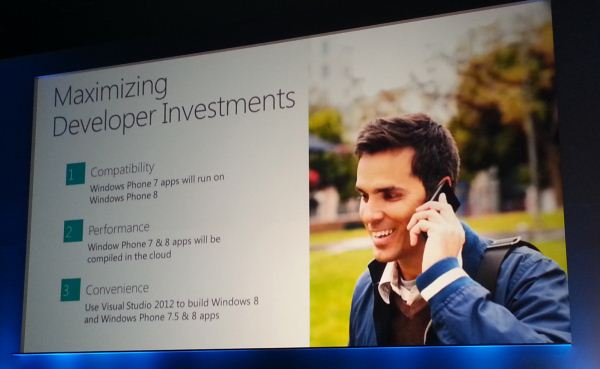

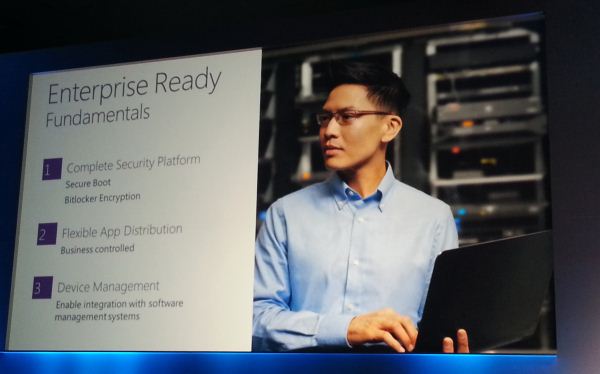
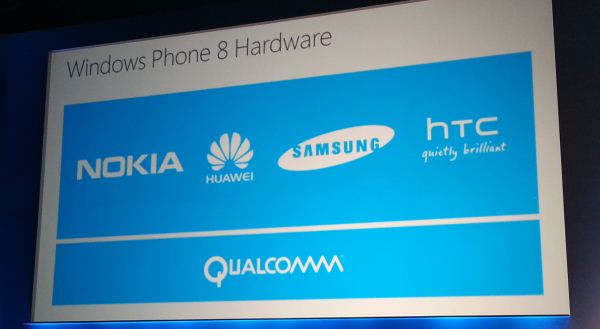
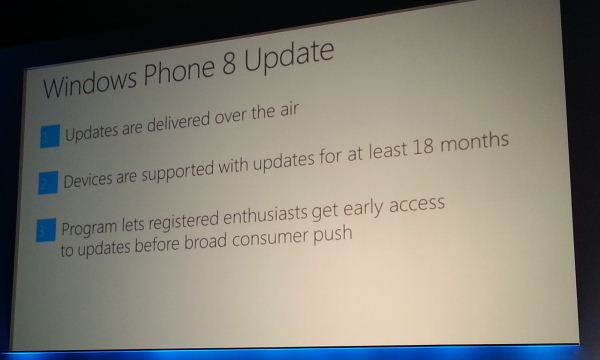
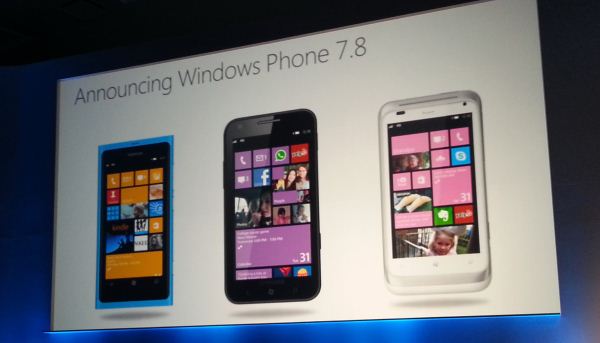






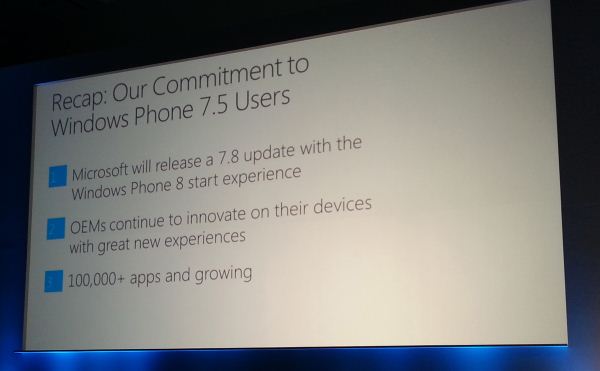








19 Comments
View All Comments
sigmatau - Wednesday, June 20, 2012 - link
You mean like when Android releases ICS and 8 months later, a phone (GS2) that was unbeatable in benchmarks one month prior to its release, is still awaiting the stupid update with no ETA?Really?
Spunjji - Thursday, June 21, 2012 - link
Derp derp Android best derp. ;)Jailbreakset - Monday, June 25, 2012 - link
Hi please postt a full fledged article on Windows Phone summit. Also ask Microsoft about if current devices running windows phone 7.5 (like mine) can be upgradedmunro771 - Wednesday, June 20, 2012 - link
I want to play Survivalcraft on it!HardwareDufus - Wednesday, June 20, 2012 - link
Interesting.Imagine QualComm will be using the SnapDragon Dual Core (an A15 like implementation), however the graphics core...... is Adreno 3XX ready? Is Adreno 225 driver compatible with WP8... can it deliver the features?
Intel is using an ATOM derived SOC to power a phone called the Orange... I wonder how long before we see Intel 22nm SOCs powering a WP8 device?
dagamer34 - Wednesday, June 20, 2012 - link
The Adreno 225 supports DirectX, so the S4 Pro shouldn't be a strict requirement with its 3XX GPU.Zink - Wednesday, June 20, 2012 - link
The cross platform compatibility sounds pretty great. Microsoft is really late to the game but they seem to have a great user experience and the software and developer support to back it up. Once Windows 8 tablets become big then Windows Phone will start to take off and in two years they can combine Windows RT into one cross platform OS from phone to desktop that will run on ARM and do everything most users and even professionally need. x86 will still be needed for workstations and servers but Microsoft has that covered too.DukeN - Wednesday, June 20, 2012 - link
In about 2 years, we'll see news about how one by one every OEM gave up.Great SW platform, but way too late...
Spunjji - Thursday, June 21, 2012 - link
Says you. We'll see, I guess :)